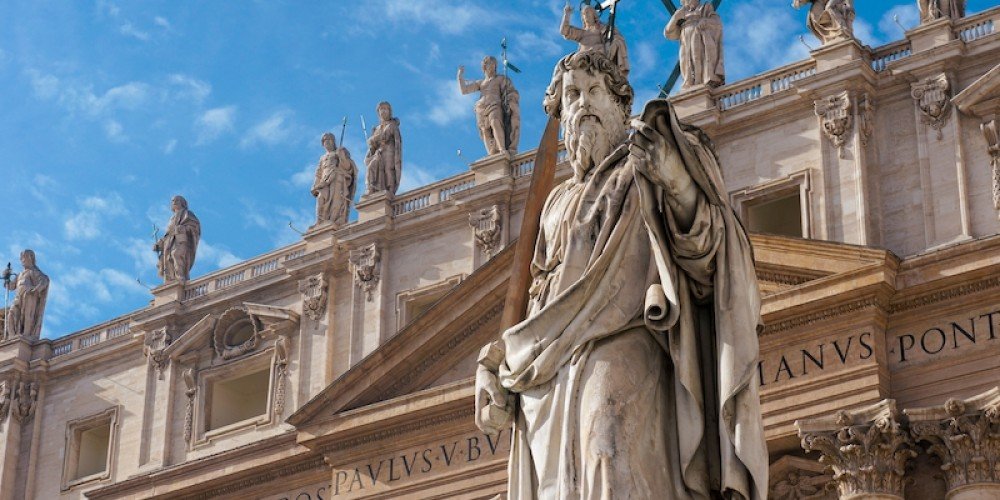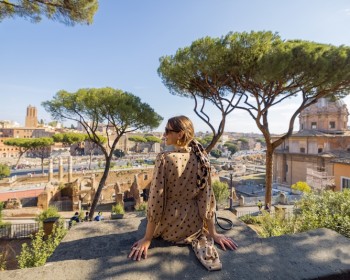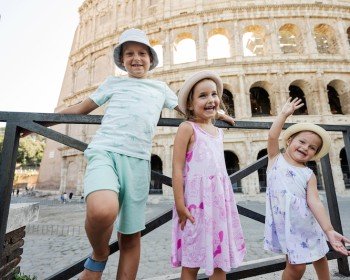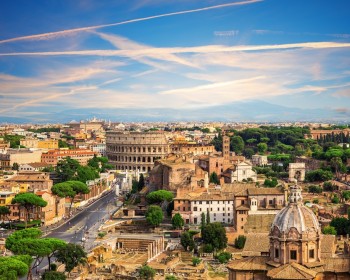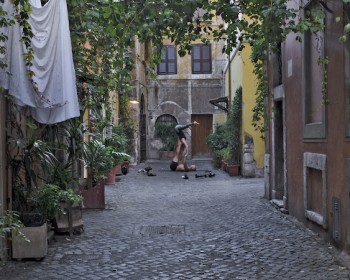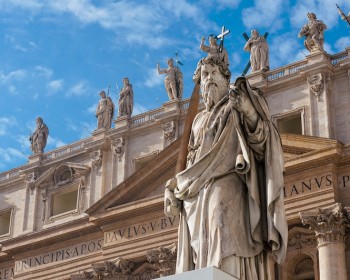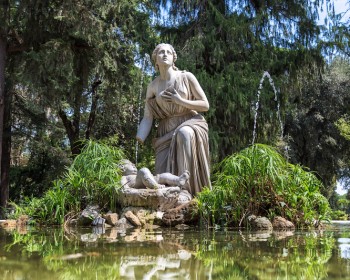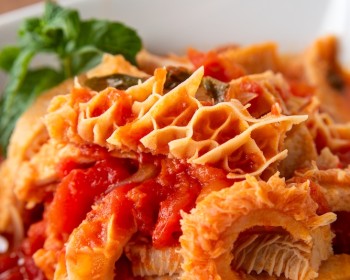Who are the Patron Saints?
Let's start by identifying who the two Patrons of the most beautiful city in the world are. Peter and Paul were two Apostles who, during the same period, dedicated their lives to spreading Christianity in the countries around the Mediterranean Sea. As we will see later, they were two men marked by completely different histories and paths of faith. Despite this, both are considered as two pillars and symbols of the church itself.
Saint Peter: His real name was Simon, but he changed his name to Peter when he decided to follow Jesus along with his brother Andrew. He has the primacy of being the first among the disciples to recognize Jesus as the Messiah and as the Son of God. Before Jesus ascended to heaven on the day Catholics celebrate Pentecost, the Messiah designated him as His successor, with the task of leading the flock of God. Peter then began his preaching work, reaching many of the known countries in the Ancient Continent. His destiny and mission of converting people to Christianity brought him to Rome, where he met his martyrdom by Nero's will. As the first pope of the Church, it was his choice to be crucified upside down because he did not consider himself worthy of dying like his beloved Master. Buried on Vatican Hill, it was in this symbolic place for Catholics that Saint Peter's Basilica was built, which still houses his remains.
Saint Paul: Like Peter, he also had another name before his conversion. He was called Saul of Tarsus. Unlike Peter, he never met Jesus, but he was the first theologian of Christianity during the same period and in the same territories where Peter was spreading the Word of God. Before his conversion to Christianity, Saul of Tarsus fervently and convincingly persecuted Christians, whom he saw as a dangerous sect that needed to be eradicated, in opposition to the Jewish tradition of which he was also a part. Legend has it that it was on the road to Damascus, during one of his journeys, that his conversion occurred: he was struck by a blinding light and heard a voice saying to him, "Saul, Saul, why do you persecute me?" After that episode, the man changed his name to Paul and began his work of spreading the Christian religion. He arrived in Rome as a prisoner and was beheaded during the persecutions ordered by Nero; his remains still lie in the Basilica of Saint Paul Outside the Walls.
Why is the Feast of Rome celebrated on June 29th?
The choice of this date to commemorate the martyrdom of these two Saints, who greatly contributed to the spread of Christianity through their influence, has ancient origins dating back to the early years of Christianity's expansion. The decision to celebrate them on the same day has two motivations: one more legendary and the other more historical. The first suggests that Peter and Paul died on the same day, June 29th, 267 AD, following the persecutions ordered by Nero against Christians in Rome. The second explanation draws from the fact that on June 29th, during the pagan era, Romulus and Remus, the founders of the city, were celebrated; by linking to this celebration, Christians wanted to honor the two Apostles and the birth of a new Rome under the Church on the same day.
The Traditions of June 29th
This day of celebrations has been repeated for centuries. Until the early 20th century, June 29th was marked by traditional outings that took Romans to celebrate the city's Patron Saints at the typical taverns of the Castelli Romani. Today, in addition to these excursions, Romans also love to celebrate this day within the urban boundaries. On the morning of June 29th, the Pope presents a white wool band (the so-called pallium) to the city's bishops, and the statue of Saint Peter is adorned with a red cloak, while in the evening, a splendid fireworks display illuminates the skies of Rome.
In the southern part of Rome, the celebrations are particularly heartfelt, especially in the San Paolo district, where the Basilica of Saint Paul Outside the Walls stands and near the Abbey of the Three Fountains, where legend has it that Saint Paul's decapitated head bounced three times, giving rise to three fountains from which water began to flow.
Two Saints Forever Connected
Saint Peter and Saint Paul are not only connected by the same date on which they are commemorated each year, but also by Christian iconography that has always depicted them embracing before being separated to meet their respective fates. We do not know if this event actually occurred, but the gesture holds significant symbolic value, as it unites two figures who symbolize the spread of Christianity in the Mediterranean basin, different yet similar in their vocation. Each accepted the other's role: Peter as the head of the Church and Paul as the first theologian of Christianity.
Conclusions
For all the reasons outlined in this article, the Feast of Saints Peter and Paul is one of the most significant celebrations for Romans, who strengthen their bond with the city and their origins through it. Each year, the present and the past merge to remind them of their identity as Roman Christians, under the sign of the great work of spreading God's Word by the two martyrs, both of whom died in the eternal city, the future cradle of the Christian religion.
